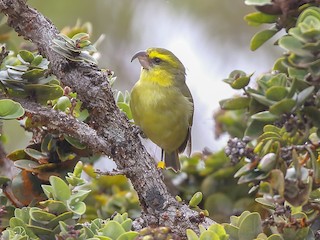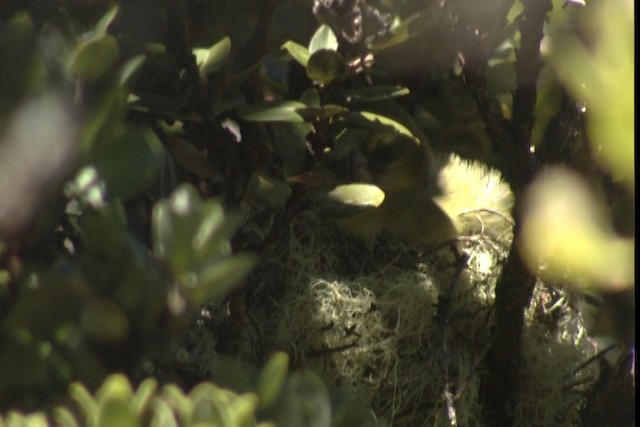Maui Parrotbill Pseudonestor xanthophrys Scientific name definitions
- CR Critically Endangered
- Names (22)
- Monotypic
Text last updated January 1, 1997
Sign in to see your badges
Species names in all available languages
| Language | Common name |
|---|---|
| Bulgarian | Мауийска папагалова чинка |
| Catalan | kiwikiu |
| Croatian | papigokljuna havajka |
| Dutch | Mauipapegaaiensnavel |
| English | Maui Parrotbill |
| English (HAW) | Kiwikiu - Maui Parrotbill |
| English (United States) | Maui Parrotbill |
| Estonian | konksnokk-nestevint |
| French | Pseudonestor de Maui |
| French (Canada) | Pseudonestor de Maui |
| German | Papageischnabel-Kleidervogel |
| Japanese | オウムハシハワイマシコ |
| Norwegian | papegøyefink |
| Polish | hawajka papugodzioba |
| Russian | Цветочница-попугаеклюв |
| Serbian | Papagaj zeba sa ostrva Maui |
| Slovak | havajčan papagájčí |
| Spanish | Pseudonestor |
| Spanish (Spain) | Pseudonestor |
| Swedish | mauifink |
| Turkish | Maui Papağangagası |
| Ukrainian | Псевдокеа |
Pseudonestor xanthophrys Rothschild, 1893
Definitions
- PSEUDONESTOR
- xanthophrys
The Key to Scientific Names
Legend Overview
Introduction
The Maui Parrotbill is an endangered Hawaiian honeycreeper that was first collected in 1892 by Henry Palmer and described by Rothschild (Rothschild 1893a). No Hawaiian name for the species survives. Currently restricted to the remote high-elevation rain forests of eastern Maui, the Maui Parrotbill was thought to be extinct until its rediscovery in 1950 (Richards and Baldwin 1953). Today the population is estimated to be about 500 birds (Scott et al. 1986).
Before the 1980s, various naturalists had encountered Maui Parrotbill but had collected little detailed information (Wilson and Evans 1890, Rothschild 1893a, Henshaw 1902a, Perkins 1903, Banko 1968, Scott and Sincock 1977). Very little was known about the species until biologists began natural history studies in the 1980s, and the first confirmed active nest was not discovered until 1993 (Van Gelder 1993, Lockwood et al. 1994).
The Maui Parrotbill is a small, olive-green bird with a relatively large, parrotlike bill, which it uses to rip into branches and stems, to pluck and bite open fruit, and to lift bark and lichens in search of concealed invertebrates. It is one of the most sexually dimorphic of Hawaiian honeycreepers: Males are much larger than females, and their underparts are brighter yellow. Chicks are fed by regurgitation, and because fledglings remain dependent on their parents for 5 months or longer, sightings are frequently of family groups.
The ecology of this species remains poorly known, but ongoing research should provide much needed information, especially about factors affecting productivity. Such understanding will be essential in developing management strategies to help safeguard the future of the Maui Parrotbill.

- Year-round
- Migration
- Breeding
- Non-Breeding
Based on Scott et al. 1986, supplemented by recent information from PEB, HB, and USGS/BRD.














































